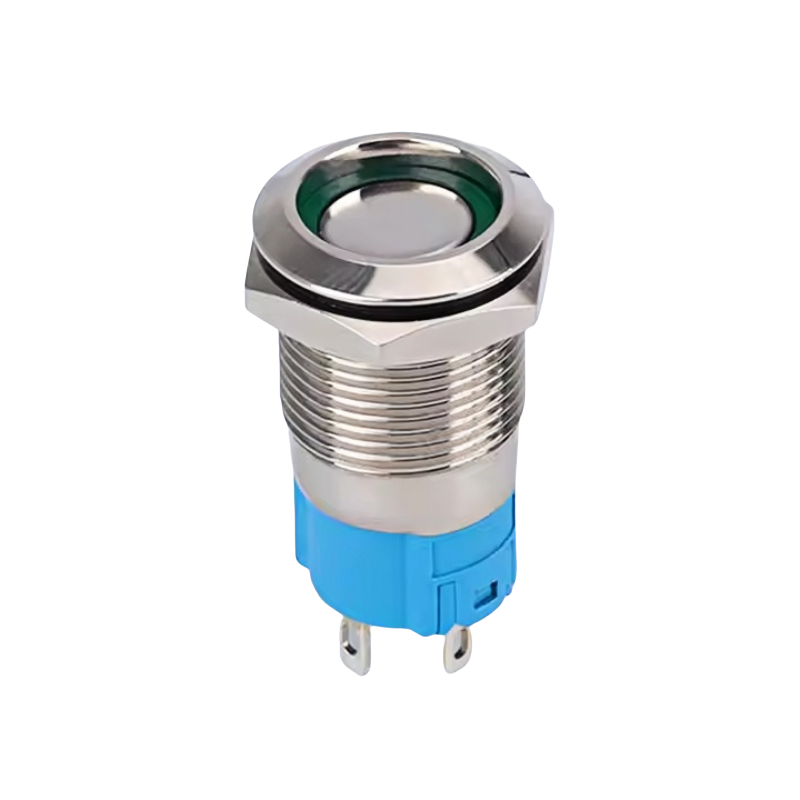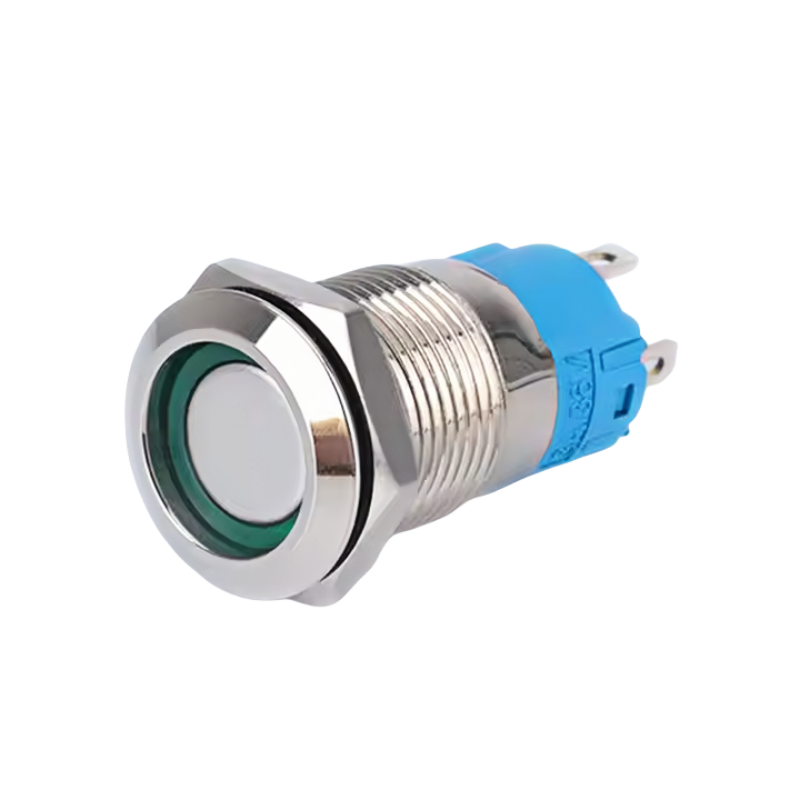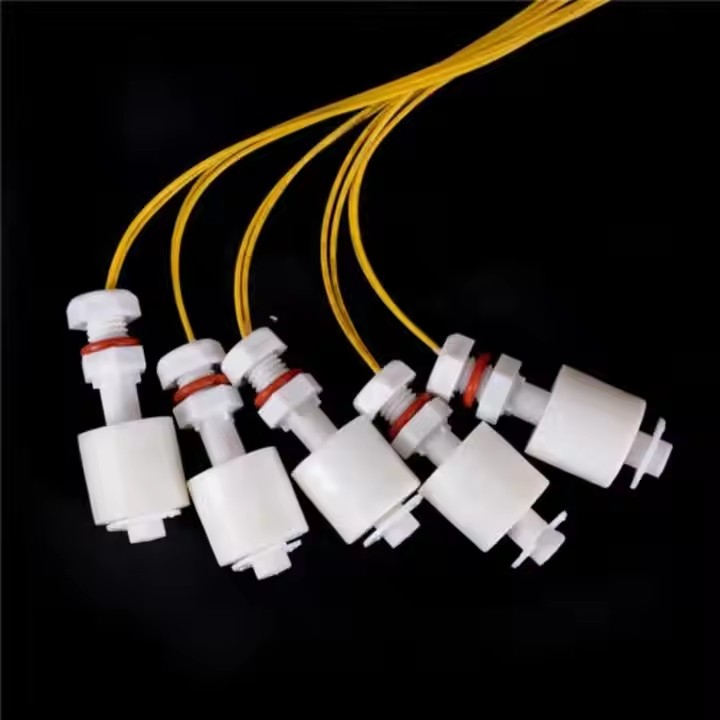Metal push button switches have become an integral part of modern technology, seamlessly blending functionality with durability. From industrial machinery to consumer electronics, these switches are designed to meet the demands of diverse environments. Among the latest advancements in this field, the MSM CS metal push button switch with its patented ceramic actuator stands out as a revolutionary innovation. This blog explores the evolution, technical features, and applications of metal push button switches, with a focus on how cutting-edge materials like ceramic actuators are redefining performance standards.

The Rise of Metal Push Button Switches
Push button switches have been a staple in electrical and electronic systems for decades. Traditionally made of plastic or rubber, these switches were prone to wear and tear, especially in harsh environments. The introduction of metal push button switches marked a significant leap forward, offering enhanced durability and resistance to physical stress. Metals such as stainless steel, aluminum, and brass became popular choices due to their robustness and ability to withstand high temperatures and mechanical impacts.
However, even metal switches had limitations. Corrosion, scratching, and chemical exposure could degrade their surfaces over time. This led to the development of advanced materials and designs, such as the ceramic actuator in the MSM CS switch, which addresses these challenges while maintaining the advantages of metal-based components.
Technical Innovations: Ceramic Actuators in Metal Push Button Switches
The MSM CS metal push button switch is a prime example of how material science is transforming switch design. Its patented ceramic actuator is engineered to combine the best properties of ceramics and metals:
- Scratch and Wear Resistance: Ceramic actuators are highly resistant to scratches and abrasions, ensuring a long lifespan even in high-traffic or industrial settings.
- Chemical Corrosion Resistance: Unlike traditional materials, ceramics do not react with most chemicals, making them ideal for environments where exposure to liquids or solvents is common.
- Low Allergenicity: Ceramic surfaces are hypoallergenic, reducing the risk of skin irritation for users who interact with the switch frequently.
- Aesthetic Versatility: The ceramic actuator allows for transparent backlighting in colors like red, green, blue, and white. This feature is particularly useful in applications where visual feedback or branding is critical.
The switch’s low profile of 1.7 mm and IK07 impact rating (resistant to impacts up to 2 J) further enhance its utility in compact and rugged devices. Its IP69K rating ensures complete protection against dust, water jets, and high-pressure steam cleaning, making it suitable for medical, food processing, and outdoor applications.
Applications of Metal Push Button Switches
The versatility of metal push button switches has enabled their use across a wide range of industries:
- Industrial Automation
In manufacturing plants, switches must endure extreme conditions. The MSM CS switch’s IP69K and IK07 ratings make it ideal for use in control panels, robotic systems, and heavy machinery. Its ceramic actuator ensures reliable operation even in the presence of oils, acids, or alkalis. - Medical Devices
Hospitals and clinics require switches that are easy to clean and resistant to disinfectants. The ceramic actuator’s chemical resistance and low allergenicity align perfectly with these requirements. For instance, the switch can be used in MRI machines, surgical tools, or patient monitoring equipment. - Consumer Electronics
From smart home devices to wearable technology, metal push button switches offer a premium feel and durability. The RGB-LED backlighting feature (as seen in some models) allows manufacturers to create visually appealing interfaces while maintaining functionality. - Automotive Industry
In vehicles, switches are exposed to temperature fluctuations, vibrations, and moisture. Metal switches with ceramic actuators provide the reliability needed for dashboard controls, HVAC systems, and safety mechanisms. - Public Infrastructure
Public spaces like airports, train stations, and malls require switches that can withstand heavy usage. The MSM CS switch’s impact resistance and durability make it suitable for emergency buttons, information kiosks, and lighting controls.

Certifications and Safety Standards
The MSM CS switch has been certified by UL, CSA, and ENEC, ensuring compliance with international safety and performance standards. These certifications are crucial for industries like healthcare and automotive, where regulatory compliance is non-negotiable.
- UL Certification: Ensures the switch meets North American safety standards for electrical and thermal performance.
- CSA Certification: Validates compliance with Canadian safety regulations.
- ENEC Certification: Guarantees adherence to European safety and quality benchmarks.
These certifications not only build trust with manufacturers but also reassure end-users about the product’s reliability and safety.
Future Trends in Metal Push Button Switches
As technology evolves, so do the expectations for push button switches. Here are some emerging trends:
- Smart Integration: Future switches may incorporate sensors or connectivity features (e.g., Bluetooth or Wi-Fi) to enable IoT applications.
- Energy Efficiency: Advances in materials could lead to switches with lower power consumption, particularly in backlighting and actuation mechanisms.
- Customization: Manufacturers are exploring ways to tailor switches to specific industries, such as adding antimicrobial coatings for healthcare or UV-resistant surfaces for outdoor use.
The integration of RGB-LED illumination (as seen in some models) hints at a growing trend toward user-centric design, where aesthetics and functionality coexist.

